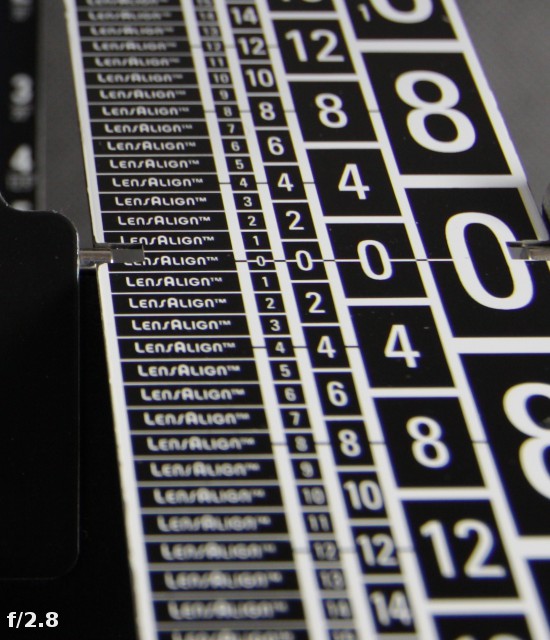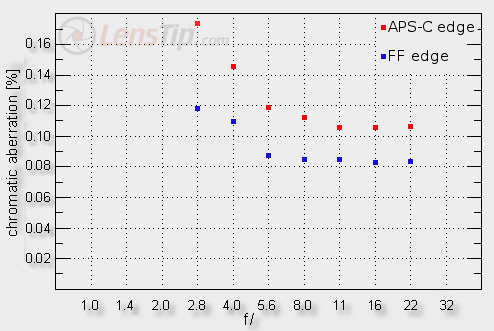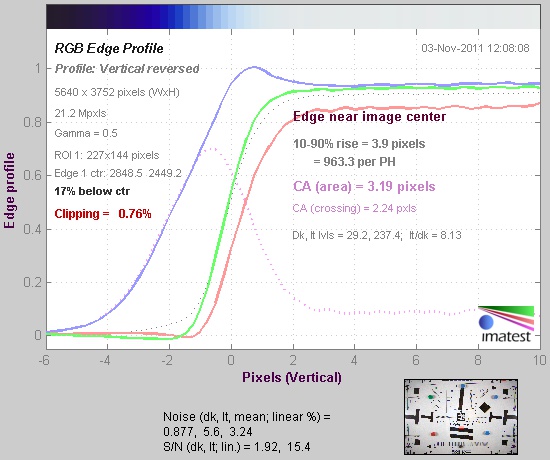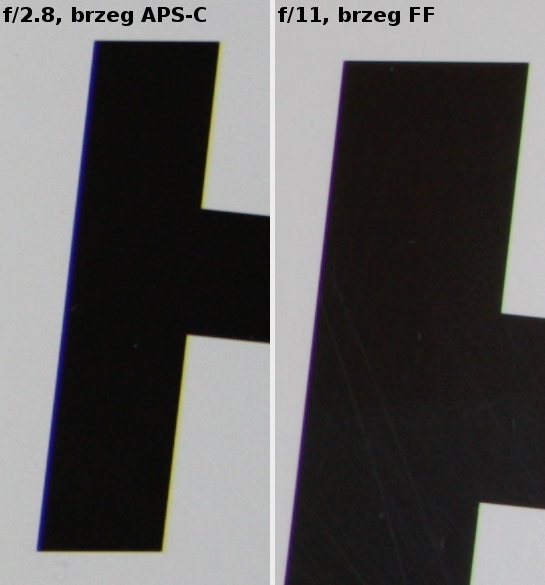Canon EF 14 mm f/2.8L USM II
5. Chromatic aberration
 |
When we move to the lateral chromatic aberration, though, the troubles begin. Let’s have a glance at a graph below.
Please Support UsIf you enjoy our reviews and articles, and you want us to continue our work please, support our website by donating through PayPal. The funds are going to be used for paying our editorial team, renting servers, and equipping our testing studio; only that way we will be able to continue providing you interesting content for free. |
- - - - - - - - - - - - - - - - - - - - - - - - - - - - - - - - - - - - - - - - - - - - - - - -

As you see on the edge of the smaller sensor the aberration level is high. It decreases to medium only on stopping down the lens by more than 2 EV. What’s more that aberration’s behaviour is quite untypical because it starts to increase dynamically at the maximum aperture, beginning from the frame centre, then it reaches a high or even very high level and only after that it slowly decreases.
As a result the lateral chromatic aberration is significant already in the distance of mere a dozen or so percent from the frame centre – so exactly where our vertical borderline between black and white, used to measure MTF50 values, is located. The following graph shows the luminosity performance separately for every colour.
 |
There are huge differences visible between particular wavelengths and the result provided by the Imatest program shows the chromatic aberration is on a very high level of over three pixels. In such conditions the resolution (in the sense of MTF50 value), measured on that borderline, cannot be high and cannot be equal to that measured on the vertical borderline, where the lateral chromatic aberration is not felt.
The Samyang 2.8/14 also had noticeable chromatic aberration but, what’s interesting, its graph was similar to the Canon’s performance, just with lower values. Once again a much cheaper lens fares better in our test.
 |






